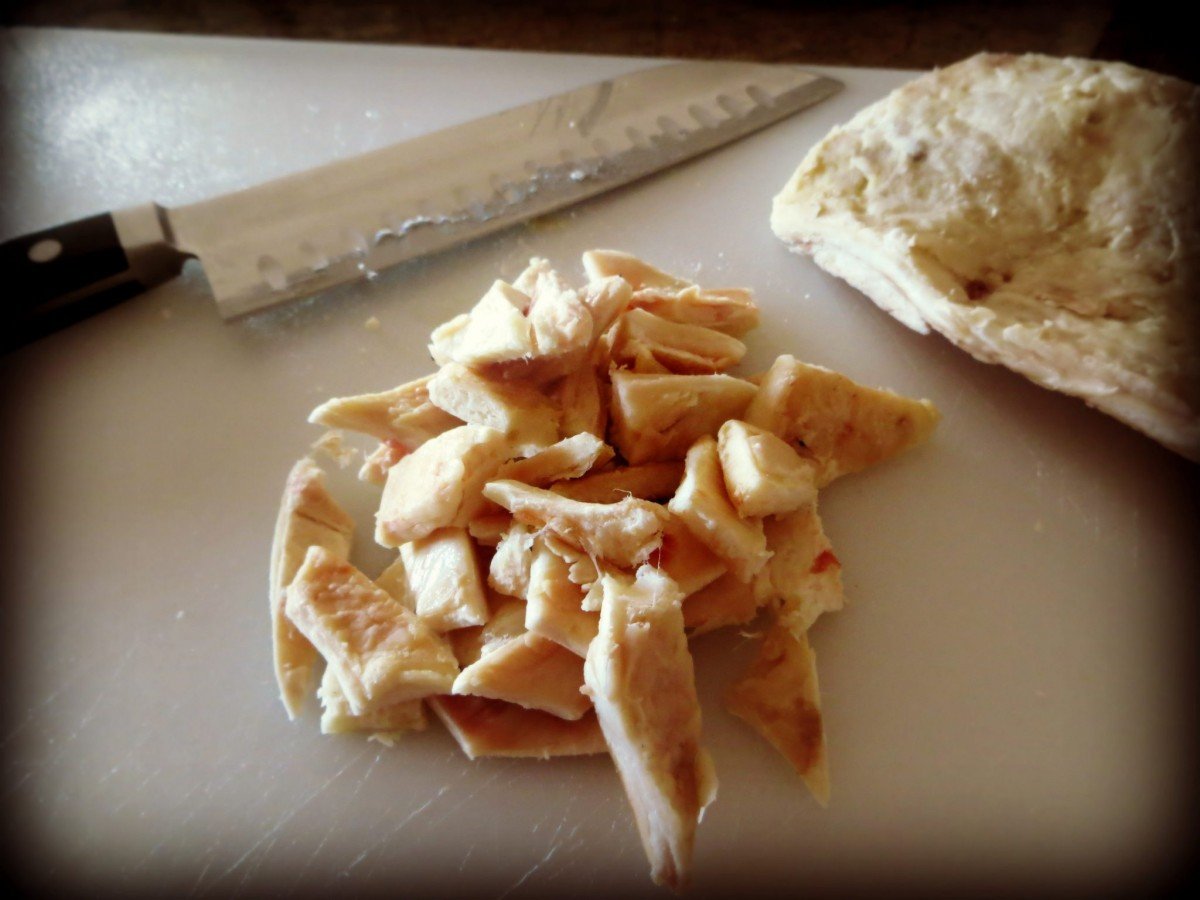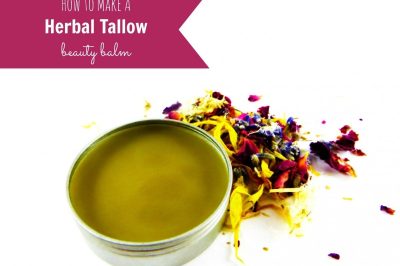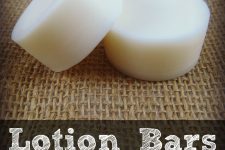As a young girl, I remember sitting on the porch while visiting my family’s farm in the mountains of northeast Georgia.
I could have listened for hours as my great-grandmother and her sister told stories of days-gone-by.
Feasting on every word…
…waiting in anticipation for the transfer of wisdom.
They would recount their lives’ as young girls growing up as the daughters of a pig farmer. Raising and growing…hunting and gathering everything required for human existence.
My great-grandmother knew the medicinal value of the plants and herbs found in and around the local area…and she quickly earned a reputation as a plant healer. I can still remember her root cellar — shelves lined with dusty old bottles…full of magic and wonder!
Using the wild-harvested plant material…she created medicinal tinctures and syrups, soap from wood-ashes, and healing salves from the lard of the pigs combined with beeswax from a “fella down the road.”
According to them, vegetable oils and other exotic oils common today — were “hard to come by back then.”
You know…
Both my great-grandmother and her sister lived to experience the later part of 90 years. To this very day, we always say those two were bullet proof! Not to mention, at 90+ years of age they had nearly flawless skin.
…they praised the lard.

The Benefits of Tallow
Modern culture and science are now cycling around…and we are learning the truth of what our ancestors knew all along.
I strongly encourage you to read the follow articles and discover for yourself the benefits of creating natural body care products with omega 3 and CLA-rich grass-fed tallow.
Each one does an excellent job of explaining in detail the benefits of using grass-fed tallow on the skin for the treatment of eczema, extremely dry skin, rashes, wrinkles, wounds, and the like — and they are as follows:
Now you see why tallow is truly a superior skin healer!
Tallow Beauty Balm Recipe
This recipe is excellent for the treatment of eczema, wrinkles, and extremely dry skin!
Ingredients
*Please use only grass-fed tallow. Click this link for localharvest.org to find a local source and render your own. However, if you are unsuccessful in locating a farmer close to home…purchasing high-quality, grass-fed tallow from U.S. Wellness Meats is a brilliant option!
- 1 1/2 cup (10-12 ounces) grass-fed tallow
- 1 cup dried herb blend (Use equal parts of rose petals, calendula flowers, horsetail, lavender flowers, marshmallow root, and irish moss as available to you.), for best results grind with a mortar and pestle
- 3 tablespoons (1.5 ounces) rosehip seed oil, olive oil, coconut oil, or jojoba oil
- 1 ounce (approx. 2 tablespoons) raw beeswax
- 1 teaspoon essential oils blend bulgarian rose otto, bulgarian lavender, myrrh, and carrotseed
Method
- Using the hot oil extraction method, begin by combining the dried herbs and tallow in a quart-sized glass Mason jar.
- Place the glass jar in a pot on the stove, or in a crock pot, that is filled with a few inches of water and set on the lowest setting. Note: Be sure to put a towel on the bottom of the pot and do not allow the temperature of the oil to rise above 110 degrees farenheit. A temperature between 95-110 is perfect.
- Infuse the oil and herbs for 4-8 hours, a day, or up to 3 days is best. Note: Watch the pot and add water as it evaporates.
- Alternatively, according to Rosemary Gladstar in her book Herbal Recipes for Vibrant Health, you may also do it this way; “Place the herbs and the oil in a double boiler and bring to a low simmer. Slowly heat for 30 to 60 minutes, checking frequently to be sure the oil is not overheating.”
- After the infusion period, the oil must be strained through a cheesecloth or fine mesh strainer and the herbs discarded…reserving the herb-infused tallow.
- In a small pot or double boiler, melt the herb-infused tallow and beeswax over very low heat.
- Remove from heat and cool slightly.
- Add the essential oils and rosehip seed oil, olive oil, coconut oil, or jojoba oil.
- Stir well to combine.
- Pour into labeled tins or glass jar for storage.
To Use
This balm will keep for years if stored in a cool, dark place. Use this balm daily:
- under the eyes to prevent and fade wrinkles
- to heal eczema and other hard-to-heal skin disorders
- on extremely dry skin
- as a cuticle cream
- to soften callused feet
- as a total body moisturizer
Where Can I Get This Stuff
-Mountain Rose Herbs…they have everything (dried herbs, essential oils, and high-quality carrier oils) you’ll need for this balm! It’s your one-stop-shop!
–The Bulk Herb Store also carries many of these ingredients if you’d like to price check.





 All Natural Flea Remedies :: Canine Herbal Dry Shampoo :: A Deodorizing Flea & Tick Powder
All Natural Flea Remedies :: Canine Herbal Dry Shampoo :: A Deodorizing Flea & Tick Powder
Is there a Vegan substitute for the animal tallow?
Thanks!
Hi Erin! There are no exact vegan substitutes for tallow…however, the vegetable oils such as rosehip seed, coconut, jojoba, olive, and even argan are commonly used.
I would say coconut oil would be the best substitute because it is also white and solid at room temperature, at least for the consistency of the final product. Also, coconut oil is just simply amazing for so many other reasons, especially for skin care. Check out http://www.coconutresearchcenter.org 🙂
Agreed!
This is great! I have been using tallow for lip and face moisturizer but have not loved the smell, what a great way to get the benefits of tallow with a girly smell!
Oh you got it Beth! I felt the exact same way! Infusing the herbs and adding the essential oils has made using tallow that much more enjoyable 🙂 Don’t you love how it makes your skin look and feel!?!
I am new to herbal medicines and I am wondering if you could put tea tree oil (or something else… suggestions are encouraged) in this to make it have antibiotic qualities? I am thinking maybe an alternative to triple antibiotic ointment? Thanks 🙂
Good thinking Lena! The beautiful thing about remedies such as these…you can create them to fit your needs. I think it’s a great idea to add tea tree. Common antiseptic, antibiotic, antimicrobial eo’s such as lemon, clove, rosemary, lavender, oregano, and thyme would be wonderful additions too. You could also add herbs to the infusion to increase antibiotic properties — herbs such as goldenseal or Oregon grape root are excellent.
Is this beef tallow or could you use lard from a pig?
I use beef tallow because that’s what I can get locally and grass-fed…but any animal tallow would do (i.e. lamb, deer, etc.) If you have a good source for lard from pigs that have been raised on pasture or free-foraging that would be awesome!
I have been interested in tallow for awhile now. I need to find a local source. I have extremely dry skin and have been making my own products with only vegetable oils. My skin is still lacking something. I know that is tallow.
Absolutely! Here’s a great quote from one of the articles I linked to above — they say…
“In regard to this compatibility of tallow with the biology of our skin, we should note that we are animals rather than plants, so the modern taboo against animal products in skin care products would seem unfounded and even illogical. In addition to containing very little saturated fats, plant products do not have the same levels of other nutrients needed for healthy skin. Tallow contains the abundant natural fat-soluble activators, vitamins A, D, and K, as well as vitamin E, which are found only in animal fats and which are all necessary for general health and for skin health.”
I couldn’t agree more!
Do you use drops from all the essential oil bottles until you have 1 teaspoon total? Thank you, Sue
Exactly right!
awesome
Thank you 🙂
Thank you for the link to Wellness Meats. You are the first person that did not tell me to go find your own. Until I can find a local resource, I now have a place to get some-THANK YOU.
I really like US Wellness Meats. They may be a bigger company but they really support the small farmer…not to mention, they hold to very high ethical standards. I order from them fairly often and have always been impressed with the quality! Enjoy 🙂
I’m with Debra! It is so great to have this resource. Thank you for linking to it. I am impressed with your knowledge and grateful for your etsy shop, too! 😉
Thank you for sharing your lotion recipe. I just would like to know why you add bees wax since the tallow is firm at room temp and very little oil and no water is added. Please let me know.
Thank you.
Usually located outdoors, tubs need to be
properly hot tub boat for sale designed and
thought out.
I have a question about straining the infusion. Do you heat the infusion until it is close to liquid to strain it? I have been keeping my infusion close to 100 degrees. At that temperature it is creamy, but I could not image the tallow separating from the herbs when strained. Thank you.
I placed my 1st order with US Wellness Meats but my lard is pink all over.
I read on some blog that there should be no pink to it. Not even sure what
to do with it now, it was $20.
Would a preservative be helpful, and would Lard work as well? I consider Tallow to be any animal fat.Did you add anything to prolong the life of the oils, so they wont become rancid?
Tallow is beef fat, lard is pork fat. As far as I know, as long as you don’t add water, i.e. make a balm instead of a lotion, there is no need for a preservative.
I have been making lotion by adding a water phase to the oil phase and have had trouble with mold. There are preservatives like Germall that are recommended for home made lotion. The question is what is worse, spreading lotion containing a preservative (Germall 0.5%) or mold on your face.
I was just curious! When infusing the tallow do you keep a lid on it, both in the crock pot and in the pot? When I put a lid on the crock pot, condensation forms and I don’t want to get water in the infusion. I could put a lid on the infusion if I have to. Just wondering!